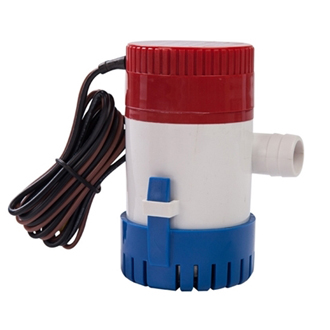Bilge Pump Troubleshooting
If a bilge pump fails, it can have serious consequences for a boat or ship, particularly in the context of marine or naval operations. A bilge pump is a crucial piece of equipment designed to remove water that accumulates in the bilge, which is the lowest compartment of a vessel's hull. The bilge pump's primary function is to keep the boat or ship afloat by preventing water from accumulating in the bilge.
What Happens If Bilge Pump Fails?
- Accumulation of Water: Without a functioning bilge pump, water entering the bilge area from sources such as leaks, rain, or waves will not be pumped out. Over time, this can lead to a significant accumulation of water in the bilge.
- Reduced Stability: As water accumulates in the bilge, the vessel's stability can be compromised. This can result in the boat or ship becoming less stable, potentially leading to a list (tilting to one side) or even capsizing in extreme cases.
- Weight Increase: The water accumulating in the bilge adds weight to the vessel, which can affect its overall performance and handling. This can make the vessel slower and less maneuverable.
- Damage to Electrical Systems: Water in the bilge can damage electrical systems and components, including batteries, wiring, and important electronic equipment. This can lead to power failures and navigational issues.
- Corrosion: Prolonged exposure to water in the bilge can lead to corrosion of the vessel's structural components and machinery, causing long-term damage to the hull and engine systems.
- Sinking: In the worst-case scenario, if the bilge pump failure is not addressed and the water accumulation continues unchecked, the vessel can eventually sink. This poses a significant safety risk to all onboard.

Troubleshooting solutions
Solutions and preventive measures to address a bilge pump failure:
- Regular Maintenance: Ensure that bilge pumps are regularly inspected and maintained according to manufacturer recommendations. This includes checking for clogs, verifying that the float switches are functioning, and replacing worn or damaged parts. Routine maintenance can help identify and address issues before they lead to pump failure.
- Backup Bilge Pump: Install a secondary or backup bilge pump system. This can be a separate electric bilge pump, a manual bilge pump, or even a portable pump that can be used in emergencies. Having a backup pump provides redundancy in case the primary pump fails.
- Bilge Alarm: Install a bilge alarm system that can alert you when the water level in the bilge rises beyond a certain point. This early warning system can give you time to address the issue before it becomes critical.
- Regular Bilge Inspections: Routinely inspect the bilge for any signs of water accumulation or leaks. This can help you identify problems early and take corrective actions before they worsen.
- Emergency Procedures: Develop and communicate clear emergency procedures for addressing a bilge pump failure. Ensure that the crew or passengers know how to respond, including how to operate manual pumps, close off leaking areas, and communicate with rescue services if needed.
- Float Switches: Install high-quality float switches that activate the bilge pump when the water level rises to a certain point. Ensure these switches are in good working condition and periodically test them.
- Battery Backup: Consider installing a backup power source, such as a separate battery or a generator, to ensure that the bilge pump can continue running in the event of a main power failure.
- Proper Sealing and Caulking: Maintain the integrity of the vessel's hull by regularly inspecting and resealing areas where leaks can occur. Proper caulking and sealing of seams, joints, and through-hull fittings can help reduce the ingress of water into the bilge.
- Bilge Pump Alarm Systems: Some bilge pumps come equipped with alarm systems that notify you when the pump is not working correctly. Consider using such systems to detect issues proactively.
- Education and Training: Ensure that the crew or boat operators are trained in bilge pump operation and emergency response procedures. Knowledge of how to use the equipment effectively is essential in case of a failure.
By implementing these measures and being proactive in bilge pump maintenance and safety protocols, you can significantly reduce the risks associated with bilge pump failure and enhance the overall safety of your vessel. For more pumps troubleshooting solutions, please visit the ATO.com.

